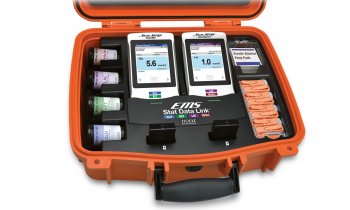Article • Availability of electronic patient records
Cross-border exchange of patient data: A digital transformation
‘Compared to other sectors, healthcare is lagging behind in the systematic use of electronic data,’ says Martin Seychell, EU Deputy Director-General for Health and Food Safety (DG SANTE) and top official at the European Health Forum Gastein (EHFG). ‘However,’ he adds, ‘this is changing and the digital transformation is happening right now.’
Report: Michael Krassnitzer

The EU Commission has recently made a series of recommendations on the development of a European system to give citizens access to their electronic patient data across all member states. The objective is a European format that allows the safe exchange of electronic patient records under adherence to data protection regulations. ‘Each year, more than two million EU citizens need to use health services when abroad,’ Seychell explains. ‘In these cases, electronic patient records (EPRs) can provide important information. EPRs not only make access to information easier but also improve the continuity and quality of medical treatment.’
Promising start for eHDS
Work is underway to develop the infrastructures to exchange healthcare data within the member states as well as at a European level, including the specifically designed eHealth Digital Service Infrastructure, eHDS. A number of member states already started a cross-border exchange of patient summaries and electronic prescriptions. Finland, Estonia and Croatia use the eHDS to exchange electronic prescriptions: Estonian and Croatian pharmacies can hand out medication to Finnish citizens, prescribed to them electronically by their GPs. ‘Almost 5,000 electronic prescriptions were redeemed in the first few months,’ Seychell says.
Patient summaries can be exchanged between the Czech Republic, Luxembourg and Croatia via eHDS. These are short versions of EPRs that provide doctors with essential information on patients. Luxembourg doctors now have digital access to patient summaries of travellers from the Czech Republic or Croatia. ‘Malta and Portugal are soon to follow,’ Seychell reveals.
Image source: Shutterstock/pandpstock001
The plan is for 22 member states to be able to exchange EPRs by 2022. According to recommendations made by the EU Commission, the next step will be to extend the scheme to the exchange of laboratory examinations, hospital discharge letters, radiological imaging and the respective results. ‘The objective is a complete electronic health record,’ Seychell explains. He believes the basic prerequisites for this will be interoperability as well as data protection and safety.
An interchange format for electronic health records (European Electronic Health Records, EHR) is to be developed. The specifications for this interchange format are to be regularly monitored and updated to react to people’s changing needs, as well as to technological developments. ‘Safety and the protection of privacy are of essential importance for people’s trust in electronic health records,’ Seychell emphasises. Therefore, the exchange must be carried out in full compliance with the general data protection regulations that govern the framework for the protection of personal data. Furthermore, the EU Directive on the security of Network and Information Systems (NIS) sets out a number of safety measurements for network and information systems.
‘All this will not happen without massive investment on national and EU levels,’ the top EU official again emphasises. The EU Commission has already initiated a number of financial instruments. The ‘eHealth Network’ of the respective EU heads – under the leadership of Dr Clemens Martin Auer (as it so happens, president of the EHFG 2019) – has developed guidelines for such investments into the digital infrastructure. ‘Whoever is looking for EU funding for investments into the cross-border exchange of healthcare data needs to adhere to these guidelines,’ Seychell emphasises.
Profile:
In 2011, Maltese pharmacist Martin Seychell BSc became EU Deputy Director-General for Health and Food Safety (DG SANTE, formerly DG Health and Consumers (SANCO), as the directorate was known until 2015). Before becoming an EU official, he was the Director of Environment Protection at the Malta Environment and Planning Authority.
31.10.2019











